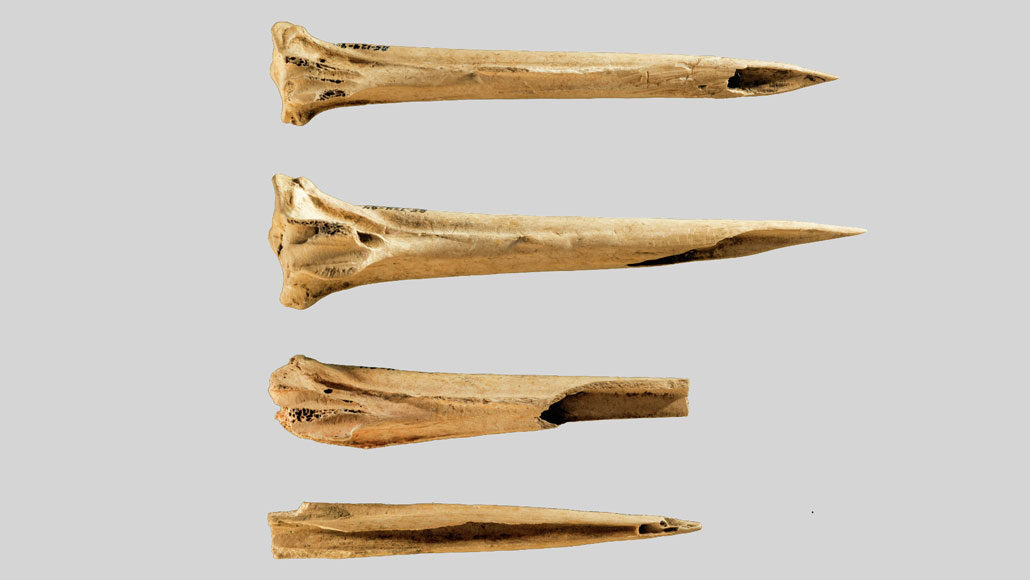
These pigment-stained bones are the world's oldest known tattooing tools, say archaeologist Aaron Deter-Wolf of the Tennessee Division of Archaeology in Nashville and his colleagues. The find suggests that Native American tattoo traditions in eastern North America extend back more than a millennium earlier than previously thought (SN: 3/4/19). Ötzi the Iceman, who lived around 5,250 years ago in Europe, displays the oldest known tattoos (SN: 1/13/16), but researchers haven't found any of the tools used to make the Iceman's tattoos.
Excavations in 1985 revealed these turkey bones and other elements of a probable tattoo kit in a man's burial pit at Tennessee's Fernvale site, the researchers report in the June Journal of Archaeological Science: Reports. Damage on and near the tips of the two turkey leg bones resembles distinctive wear previously observed on experimental tattooing tools made from deer bones, Deter-Wolf's team says. In that research, tattooed lines in fresh slabs of pig skin were produced by a series of punctures with tools that had tips coated in a homemade ink. Experimental tattooing left ink remnants several millimeters from tools' tips, a pattern also seen with red and black pigment residues on the Fernvale tools.
Two turkey wing bones found in the same Fernvale grave display microscopic wear and pigment residues that likely resulted from applying pigment during tattooing, the scientists say. Pigment-stained seashells in the grave may have held solutions into which tattooers dipped those tools.
Citations
A. Deter-Wolf, T.M. Peres and S. Karacic. Ancient Native American bone tattooing tools and pigments: Evidence from central Tennessee. Journal of Archaeological Science: Reports. Vol. 37, June 2021, 103002. doi: 10.1016/j.jasrep.2021.103002.
C. Gates St-Pierre. Needles and bodies: A microwear analysis of experimental bone tattooing instruments. Journal of Archaeological Science: Reports. Vol. 20, August 2018, p. 881. doi: 10.1016/j.jasrep.2017.10.027.



Comment: See also:
- America Before by Graham Hancock - Book review
- Oldest weapons ever discovered in North America uncovered in Texas dig
- World's oldest cooking pots found in Siberia, created 16,000 years ago at the end of the last ice age
- America's prehistoric Clovis people made tools only during 300-year period at time of climatic upheaval
- Ötzi the iceman, the multiple mosses, and his final days
And check out SOTT radio's: